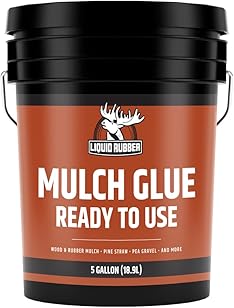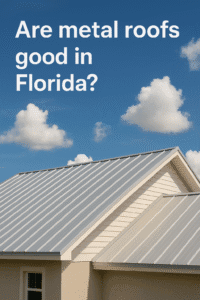Are Metal Roofs Good in Florida? A Homeowner’s Deep Dive
Thinking about a new roof in the Sunshine State? You’ve seen them glinting in the sun, and you’ve heard the buzz. But are metal roofs truly a smart choice for Florida’s unique climate of hurricanes, intense heat, and torrential rain? Let’s cut through the noise and get to the real answer.
| Quick Verdict: Should You Get a Metal Roof in Florida? | |
|---|---|
| Overall Recommendation | Highly Recommended for most homeowners seeking long-term value and protection. |
| Best For | Durability, hurricane resistance, energy savings, and longevity. |
| Worst For | Homeowners on a tight upfront budget or those who prioritize silence during rainstorms above all else. |
| Key Factor | Proper installation is non-negotiable for performance and warranty. |
My Take as a Florida Homeowner
My name is Alex, and I’ve lived in the Tampa Bay area for over 20 years. I’ve weathered my share of tropical storms and hurricanes, and I’ve seen what they can do to a traditional asphalt shingle roof. After Hurricane Ian peeled shingles off my roof like a banana, I knew I needed a permanent solution. I spent six months researching, talking to contractors, and weighing the pros and cons before pulling the trigger on a standing seam metal roof. This article is the culmination of that research and my first-hand experience living under a metal roof in Florida. I’m not a roofer, but a homeowner who’s done the homework so you don’t have to.
The Big Question: Why Even Consider a Metal Roof in Florida?
Florida is tough on homes, especially roofs. Between the blistering summer sun that cooks traditional materials and the annual threat of hurricane-force winds, your roof is your home’s first and most important line of defense. For decades, asphalt shingles were the default choice due to their low upfront cost. But as climate patterns shift and insurance costs rise, more Floridians are looking for a more resilient, long-term solution. Enter the metal roof.
Modern metal roofing isn’t the rusty, noisy tin you might imagine on an old barn. It’s a high-tech, engineered system designed to withstand the very worst that Florida’s weather can throw at it. Let’s break down the good, the bad, and the essential.
The Unbeatable Benefits (Pros)
- Hurricane Resistance: Engineered to withstand wind speeds of 140 mph or more, far exceeding what most shingles can handle. This is the #1 reason for many Floridians.
- Incredible Longevity: A properly installed metal roof can last 50-70 years or more, two to three times longer than an asphalt shingle roof. It’s often the last roof you’ll ever buy.
- Energy Efficiency: Metal roofs, especially lighter-colored ones, reflect solar radiant heat. This can reduce your cooling costs by up to 25%, a huge deal in our sweltering summers.
- Insurance Discounts: Many Florida insurance companies offer significant discounts for homes with a certified wind-mitigated metal roof. This can help offset the initial cost over time.
- Fire Resistant: Metal is non-combustible, giving you the highest fire rating (Class A) and peace of mind.
- Low Maintenance: No shingles to replace, less susceptible to moss and algae growth, and generally just needs a cleaning every now and then.
The Potential Downsides (Cons)
- High Upfront Cost: This is the biggest hurdle. A metal roof can cost 2-4 times as much as an asphalt shingle roof initially. It’s a long-term investment.
- Noise During Rain: While modern installation with proper decking and insulation drastically reduces noise, it can be louder than shingles during a heavy downpour. Some find it soothing; others don’t.
- Potential for Denting: While incredibly strong against wind, certain types of metal can be dented by very large hail or falling tree limbs. This is more of an aesthetic concern than a functional one.
- Repair Complexity: If a panel is damaged, it can be more complex and expensive to repair than simply replacing a few shingles. Finding a qualified installer is key.
- Expansion and Contraction: Metal expands and contracts with temperature changes. A professional installation uses fasteners and systems that allow for this movement to prevent issues.
Metal Roofs vs. Asphalt Shingles: The Florida Showdown
For most Florida homeowners, the choice comes down to these two options. Here’s a head-to-head comparison based on the factors that matter most in our state.
| Feature | Metal Roof | Asphalt Shingles |
|---|---|---|
| Average Lifespan (FL) | 50 – 70+ Years | 15 – 25 Years |
| Wind Resistance | Excellent (140-180 mph) | Fair (60-110 mph) |
| Upfront Cost | High ($10 – $20+ per sq. ft.) | Low ($4 – $7 per sq. ft.) |
| Energy Efficiency (Cooling) | Excellent (Reflects heat) | Poor to Fair (Absorbs heat) |
| Insurance Savings | Significant Discounts Likely | Minimal to None |
| Maintenance Needs | Low (Occasional cleaning) | Moderate (Replacing blown-off shingles, algae treatment) |
| Resale Value Impact | Increases Value | Neutral / Can Detract if Old |
Decoding Metal Roof Types: What’s Right for Your Florida Home?
Not all metal roofs are created equal. The material and style you choose will impact cost, durability, and appearance. For Florida, with its coastal salt spray and intense sun, material choice is critical.
Choosing Your Metal: Aluminum vs. Steel
- Aluminum: This is the premium choice for coastal Florida. Aluminum is naturally rust-proof, making it impervious to the corrosive effects of salt spray. It’s lightweight and highly efficient at reflecting heat. While it’s more expensive than steel, it’s a “set it and forget it” solution for homes near the water.
- Galvalume Steel: This is the most common choice for inland Florida homes. It’s a steel core coated with a zinc-aluminum alloy (Galvalume) that provides excellent corrosion resistance. It’s stronger and less prone to denting than aluminum and more cost-effective. However, it’s not recommended for direct coastal applications, as scratches in the coating can eventually lead to rust from salt exposure.
- Copper: The most expensive and luxurious option. It develops a distinctive green patina over time and can last for over 100 years. It’s purely an aesthetic and “forever home” choice for those with an unlimited budget.
Choosing Your Style: Standing Seam vs. Panels
- Standing Seam: This is the “gold standard.” It consists of vertical panels with interlocking seams that are raised above the roof’s surface. This design hides the fasteners from the elements, minimizing potential leak points and creating a sleek, modern look. It’s the most durable and water-tight system, but also the most expensive.
- 5V-Crimp / Corrugated Panels: A more traditional and cost-effective style often seen in “Key West” architecture. The fasteners are exposed but are installed through the top of a rib with a rubber washer to seal them. It’s a durable and effective system, offering a classic Florida look for a lower cost than standing seam.
- Metal Shingles/Tiles: These systems are designed to mimic the look of traditional asphalt shingles, slate, or clay tiles while providing the benefits of metal. They are more complex to install but offer a traditional aesthetic if the modern look of panels isn’t for you.
Recommended Products for Your Metal Roof
Once you have your metal roof, proper care and having the right accessories are key to maximizing its lifespan. These are products I’ve researched and recommend that you can easily find on Amazon. (Note: These are affiliate links. As an Amazon Associate, I earn from qualifying purchases at no extra cost to you.)

Liquid Rubber Waterproof Sealant
This is a must-have for any homeowner. Perfect for sealing small gaps around vents, skylights, and flashing where leaks could potentially start. It’s UV stable and flexible, ideal for Florida’s sun.
- Easy to apply
- Excellent adhesion
- Durable & flexible
- Strong odor during application

Raptor Gutter Guards
Pine needles, leaves, and granules from neighboring shingle roofs can clog your gutters, causing water to back up under your roof. These stainless steel micro-mesh guards are top-rated and prevent clogs for good.
- Keeps all debris out
- Durable stainless steel
- DIY-friendly installation
- Higher initial cost than foam

30 SECONDS Outdoor Cleaner
Even metal roofs can get a bit of dirt or algae, especially on lower-slope or shaded sections. This cleaner attaches to your hose and makes quick work of cleaning without harsh pressure washing that could damage the finish.
- Very fast acting
- No scrubbing required
- Safe for roof coatings
- Requires thorough rinsing

Sun Joe Electric High Pressure Washer
For tougher dirt and grime, an electric pressure washer is a fantastic tool. Use it with a wide-angle nozzle (40-degree) and keep a safe distance to avoid damaging the roof’s finish. Also great for driveways and siding.
- Lightweight & maneuverable
- Good power for home use
- Affordable and versatile
- Not as powerful as gas models
Frequently Asked Questions (F.A.Q.)
Do metal roofs make your house hotter in the Florida sun?
No, quite the opposite. This is a common myth. While the metal itself gets hot to the touch, its high reflectivity (emissivity) prevents that heat from transferring into your attic. A “cool roof” with a light color and an ENERGY STAR rating reflects solar radiation, keeping your attic space cooler and lowering your air conditioning bills significantly compared to a dark asphalt shingle roof that absorbs and holds heat.
Will my metal roof rust in Florida’s humidity and rain?
Not if you choose the right material. An aluminum roof is inherently rust-proof. A Galvalume-coated steel roof is highly rust-resistant and perfectly suitable for most of Florida. The key is professional installation that avoids scratching the coating. Rust is a non-issue with the correct, modern materials designed for our climate.
Can I walk on my metal roof?
It depends on the type. You can walk on standing seam and 5V-crimp roofs if you walk on the ribs or purlins for support, but it’s generally not recommended to avoid slipping or denting the panels. You should never walk on metal tile or shingle-profile roofs. For any work, it’s always safest to hire a professional with the right safety gear.
How much can I really save on insurance with a metal roof?
Savings can be substantial, often ranging from 10% to 30% on your annual homeowners insurance premium. To get the discount, you’ll need a “Wind Mitigation Inspection” after the roof is installed. The inspector will document the roof’s features (material, attachment method, etc.), and you submit this report to your insurance company. The savings alone can make the investment in a metal roof pay off much faster.
The Final Verdict: A Resounding Yes for Florida
After weighing all the evidence, living with one myself, and looking at the long-term trends in Florida’s weather and insurance markets, my conclusion is clear: Yes, metal roofs are an excellent, if not the best, choice for Florida homeowners.
The high upfront cost is a significant financial consideration, and it’s not the right choice for everyone’s budget. However, if you plan to stay in your home for more than 10 years, a metal roof is a true investment. It’s a “buy it nice or buy it twice” scenario. You can replace your shingle roof two or three times over the lifespan of a single metal roof installation. When you factor in the annual savings on your electric bill and homeowners insurance, the long-term financial picture becomes incredibly compelling.
You’re not just buying a roof; you’re buying peace of mind during hurricane season, lower bills in the summer, and a durable, lasting asset that increases the value of your home.


